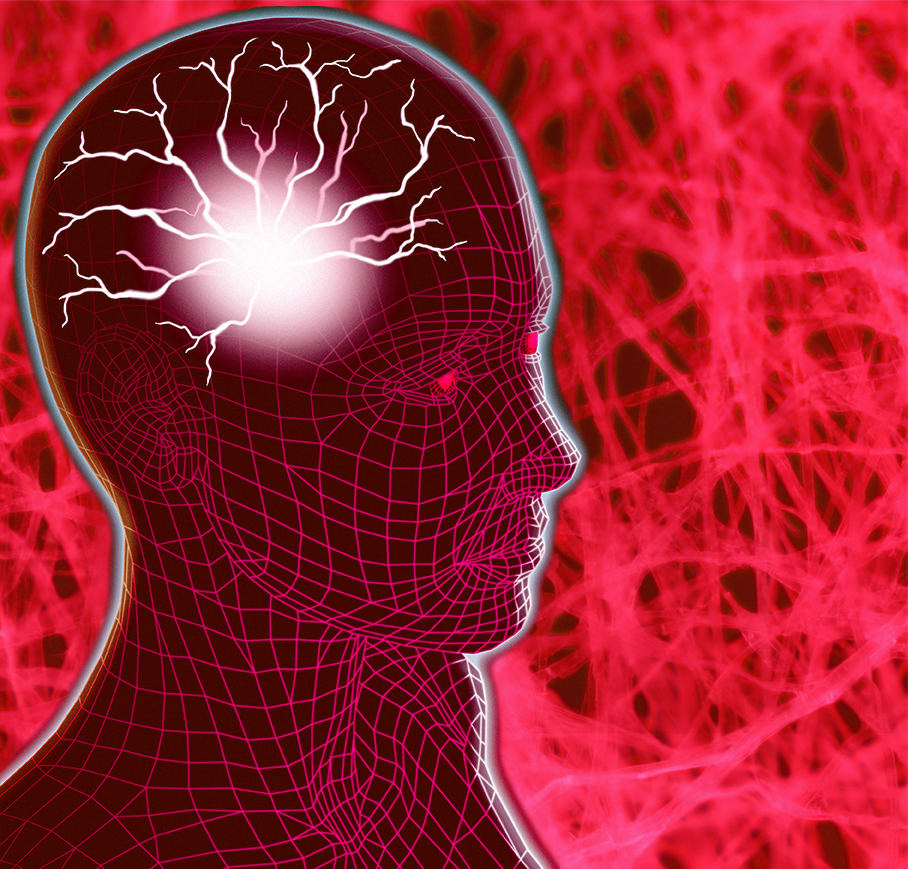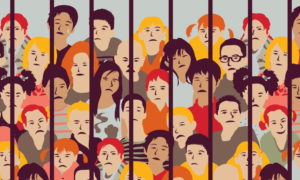WASHINGTON — A white board with a giant illustration of the human brain sat in the middle of the room, a constant reminder, participants said, that any real attempts to treat juvenile offenders begins not with detention or tough love, but with science.
Many of the teens who find themselves in the juvenile system or alternative school programs have grown up with trauma that directly impacts their cognitive functions, said Pender Makin, assistant superintendent of schools in Brunswick, Maine. Physical abuse, hunger, the pain of living through domestic violence or watching a parent sucked into a life of addiction has a physical impact on a growing brain that creates chemical reactions and PTSD symptoms.
Those problems get worse under stress. How professionals in the education and juvenile justice systems react to the outbursts and misbehavior caused by that stress often is the key to determining whether troubled kids have successful outcomes, according to Makin and a host of experts at a recent Coalition for Juvenile Justice conference.
A recurring theme in many of the presentations was a focus on restorative justice. When kids get out of control, the best educators come up with solutions that make the offender understand the consequences of their actions while tailoring a punishment that helps the teen improve, instead of escalating an already traumatic and difficult time in the youth’s life.
“When students come to school and don’t know how to read, we teach them how to read. When they don’t know how to do math, we’ll teach them algebra,” said Page Nichols, a restorative justice specialist at the REAL School, a Portland, Maine school geared toward at-risk students.
“But when a kid comes into school and acts out because they don’t know how to behave, we punish them,” she said. “We give them detention or send them into the court system. Restorative justice is really about understand what is causing the bad behavior, and helping work with them.”
Programs need to be integrated
The conference drew hundreds of juvenile justice and education experts from around the country, including judges, probation officers, teachers and correction officials. The event’s title, “Access, Accountability & Advocacy: Addressing Educational, Physical and Mental Health Needs in the Juvenile Justice System,” summed up the complexity of issues facing those in attendance.
Many of the strongest presentations June 15 and 16 at the Washington Hilton Hotel focused on the need for educators to tailor their approaches to fit individual traumas that affect the youth they see.

Karli Keator
“I think as much as anything we are trying to show how to integrate different programs and pool resources,” said Karli Keator, director of the National Center on Mental Health and Juvenile Justice. “Right now we aren’t doing enough to integrate programs, to break down some of the barriers. There isn’t enough of a collaborative approach, and that hurts treatment.”
Asked about the difficulties of trying to present new ideas to professionals, Kantor said the goal is to give people a few good ideas to take home to their districts.
“Nobody is really doing that great a job, when you think about it, so I think we can all learn from each other,” Keator said.
Relying on two decades of studies and evolving brain science, educators and juvenile justice officials said they now have a better understanding that all trauma isn’t equal, and therefore treatments and punishments must be tailored to have the best outcomes.
Equally important, educators said, is making sure that students aren’t punished or jailed for actions stemming directly from their own years as victims of crimes and poor upbringing.
[Related: Juvenile Justice Educators Debate New State Requirements Under Every Student Succeeds Act]
“Girls are criminalized for their natural responses to the trauma in their lives,” said Shakira Washington, associate director for policy at the Girls Initiative in Takoma Park, Maryland. Girls are more likely to be victims of sexual abuse, more likely to run away and more likely to be punished criminally for incidents such as truancy or minor actions that are directly attributed to their years of abuse, she told about 350 people.
Washington read an account from a woman helped by their program who told of running away from foster homes and being arrested at 14 for prostitution even though she was being trafficked by a pimp who lugged her around the country to avoid prosecution. The girl, now 22 and working a full-time job, was first trafficked at the age of 11.
Trauma-informed approach crucial

Justin Rush
Justin Rush, director of public policy for the True Colors Fund, talked about growing up black and gay in rural Mississippi in the late 1980s and early 1990s. He emphasized how important it is for educators and juvenile justice officials to understand why youth are acting out and getting in trouble instead of just reacting to their behavior.
He routinely got into fights as a response to taunting, and had a constant anger that he didn’t know existed until years later, he said.
“Nobody there knew what to do with me, and I was in and out of the system,” Rush said. “I grew up being taught if someone hits you, you hit them back harder. Well, let me tell you, that just gets you in trouble. I didn’t know any better.
“And nobody addressed the issues I had as a queer youth growing up in that environment. It’s important for us, in our work now, to understand where my responses and responses of other kids are coming from. A trauma-informed approach to my actions would have made helped so much.”
That’s the approach Makin, who brought the giant brain diagram to her panel, emphasized to those in attendance. She outlined a multipoint system she said has been proven, through trial and error in her long experience in the field, to help the most at-risk children. Some were obvious, such as making kids take personal accountability, while others focused on role-playing exercises to give such students a knowledge of “structural empathy.”
The goal is to create role-playing scenarios in which students who abuse others, steal, vandalize or take other actions that hurt others in the community understand the pain they are causing.
For example, if a kid screams at a teacher and punches a hole in the wall, they aren’t automatically expelled or sent to the justice system. Instead they must fix the hole and meet with the teacher to craft a personal apology that makes the teen know just how much their words hurt.
“Many of the things we are prosecuting kids for are normal adolescent behavior,” Makin said. “The damage that trauma causes on the developing brain is great, and the science has proven there is a chemical reaction.
“When kids get upset and scared, the cognitive learning process is affected, similar to PTSD. Nobody can learn that way, so you have to calm them down and not escalate the situation,” she said. “Restorative justice is about understanding the role trauma plays on the brain and developing teaching methods that actually are based on the needs of the students.”
































